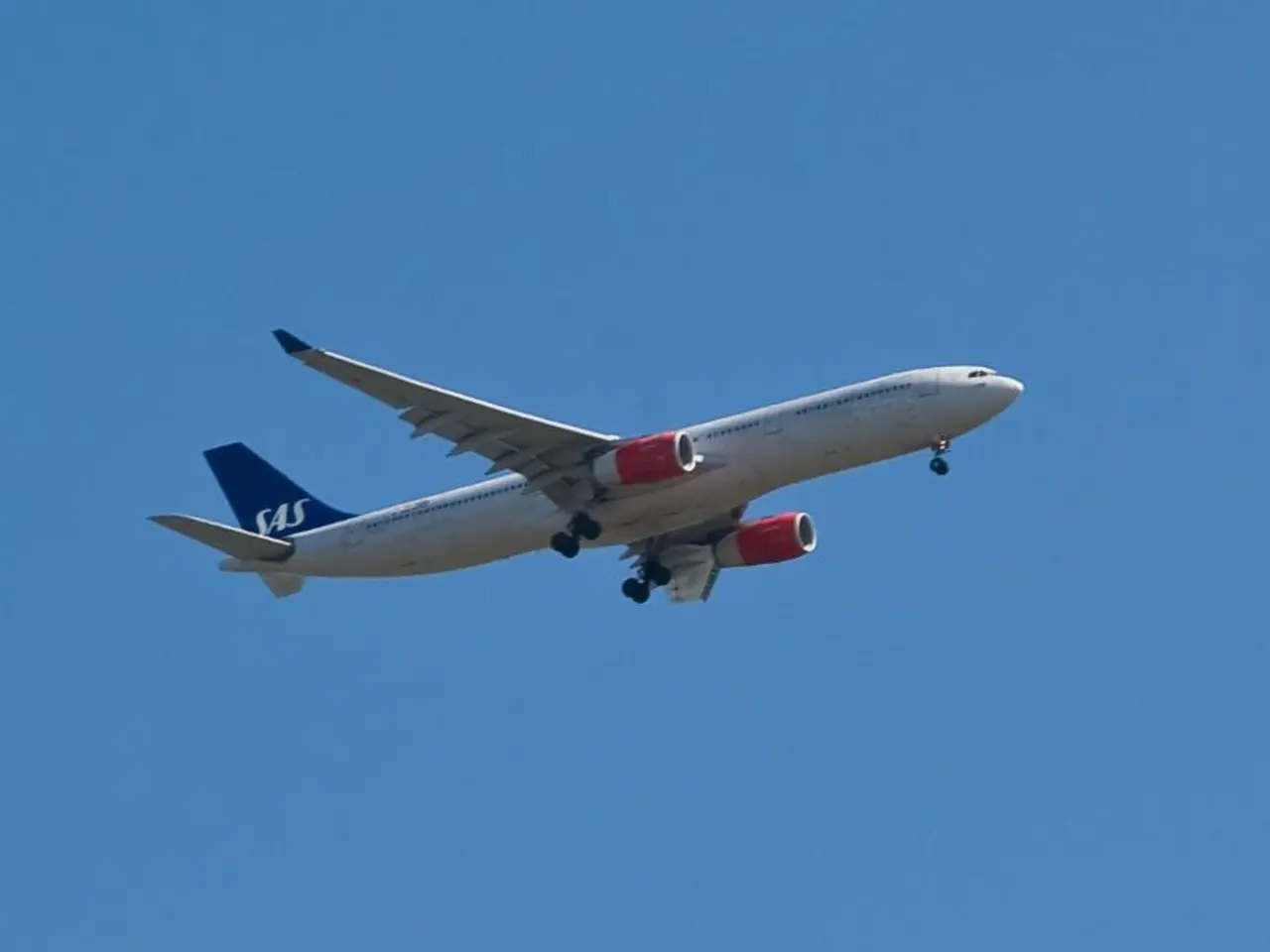Aircraft MC-130J undergoes aero dynamic tests on 'finlets' for drag reduction and lower fuel expenses.
The Air Force has begun testing a new drag-reducing technology on its MC-130J special operations aircraft, a move that could potentially improve fuel efficiency, range, and combat capability while reducing operational costs.
The small aluminum fins, known as finlets, were mounted to the MC-130J's rear door and tail fin. The testing phase began on July 16 at Eglin Air Force Base, Florida, with the aircraft set to undergo further testing at Edwards Air Force Base, California, including airdrops.
The goal of adding finlets to the entire fleet aims to reduce drag by about 6-8%, a significant step towards modernizing the fleet, reducing costs, and increasing combat capability, according to Roberto Guerrero, deputy assistant secretary of the Air Force for operational energy, safety, and occupational health.
The concept of adding small aerodynamic elements to aircraft dates back decades. The Air Force has experimented with winglets on KC-135s and microvanes on C-17s in the past. The finlets milestone marks a new phase in this ongoing quest for aerodynamic improvements.
Transport and tanker aircraft, such as the C-130, are particularly well-suited for such improvements due to their cargo doors and refueling booms. The plan is to install finlets on the entire C-130J fleet, including Super Hercules cargo aircraft, AC-130J gunships, HC-130J helicopter refuelers, and WC-130J "weatherbirds."
The installation timeline is to eventually equip the entire C-130J fleet with these drag-reduction finlets. The program is currently in testing phases, with ongoing evaluations at Eglin and Edwards Air Force Bases to analyze flight and air handling characteristics. After successful developmental testing, the installation on the whole fleet will proceed.
However, the exact calendar timeline for full fleet installation has not been publicly specified yet. It is described as a rapid deployment following successful developmental testing.
Notably, the Air Force has eliminated planned funding for KC-135 winglets in its 2026 budget request. The savings from these aerodynamic improvements could theoretically amount to millions of dollars.
The finlets project was supported by several organizations, including the Air Force Operational Energy Office, Air Force Special Operations Command, and Defense Innovation Unit. Contractor Vortex Control Technologies built the finlets and helped install them.
The milestone follows the Air Force's announcement that it is in the final phase of evaluating microvanes on the C-17. The Air & Space Forces Association, the audio sponsor of this article, honours and supports Airmen, Guardians, and their families in these innovative advancements.
- The Air Force Operational Energy Office, Air Force Special Operations Command, and Defense Innovation Unit are among the organizations supporting the finlets project on the C-130J aircraft.
- The Air Force Special Operations Command, along with the Air Force, is aiming to improve combat capability, reduce costs, and modernize the fleet by adding finlets to the entire C-130J fleet.
- The program for the finlets on the C-130J aircraft, currently in testing phases, intends to reduce drag by about 6-8% and plans a rapid deployment following successful developmental testing.
- The savings from the aerodynamic improvements on aircraft such as the C-130J, as demonstrated by the finlets project, could theoretically amount to millions of dollars, as seen with the elimination of planned funding for KC-135 winglets in the 2026 budget request.



